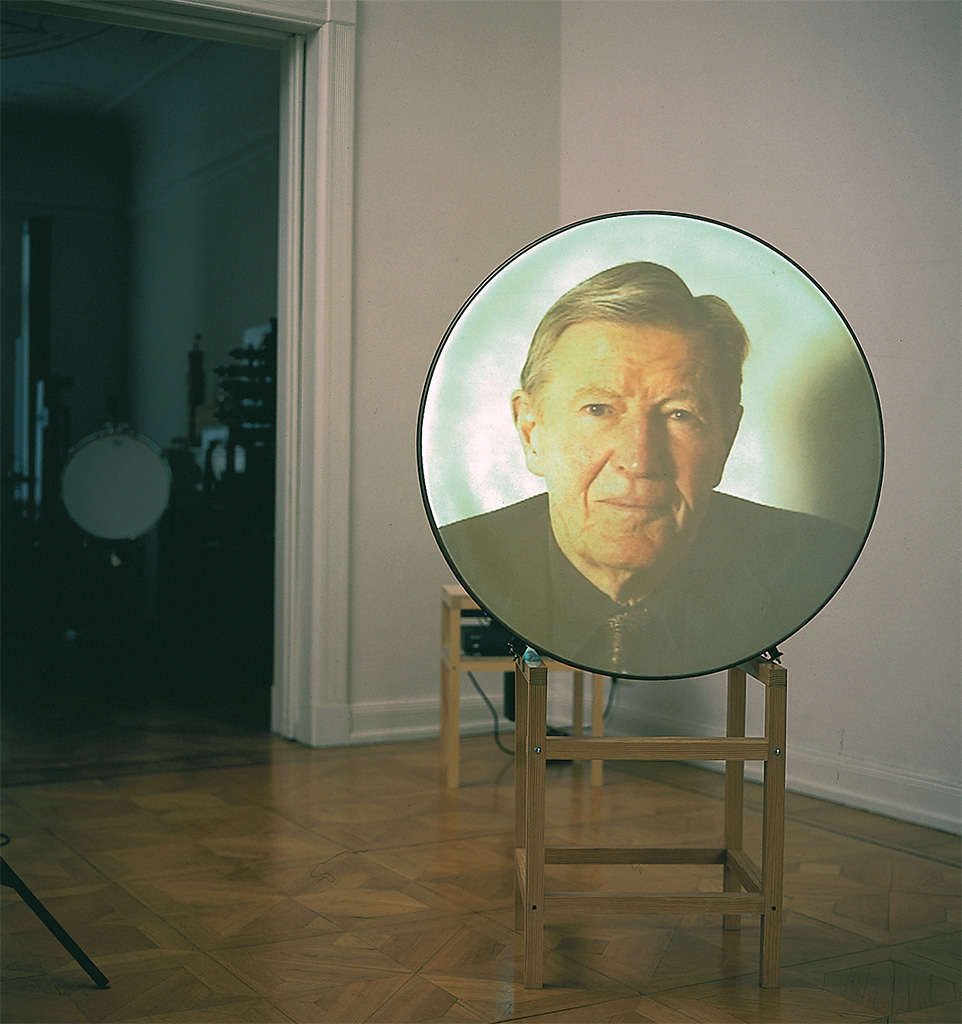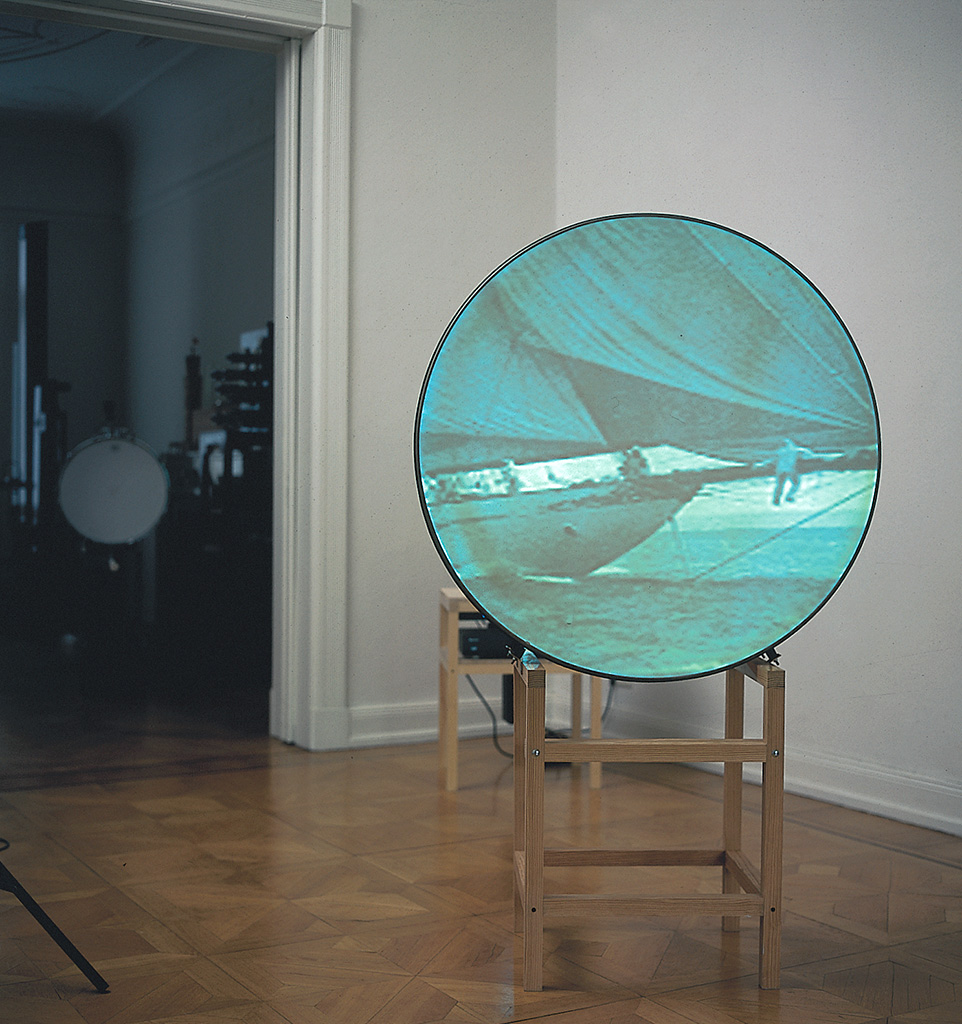photos: Christoph Irrgang
Porträt Klaus Hegewisch
Portrait Klaus Hegewisch
2000
S 2000–1
drum, video projection, technical equipment,
speaker (unfinished)
166 x 102 x 260 cm
Estate Stephan von Huene
2000
Jan-Peter Gehrckens
2:54 min
The Hamburg businessman, lifelong yachtsman, and enthusiastic art collector Klaus Hegewisch (1919–2013) was a friend of Stephan von Huene and Petra Kipphoff von Huene. When Stephan von Huene asked whether he would be interested in a portrait of himself, to which he could moreover contribute, he was intrigued and delighted.
Stephan von Huene had already long reflected on the possibilities of portraiture that lay beyond painting, sculpture, or photography. His alternative to the conventional, static depiction would have to be enacted and experienced on multiple levels: visual, acoustic, tactile – a kinetic portrait (cf. also: “The Return of the Stochastician,” in: exhib. cat. Stephan von Huene: Tune the World. Die Retrospektive, Ostfildern 2002, p. 222 f.).
In the portrait, which is also a self-portrait, Klaus Hegewisch recites a satirical poem (Karl Rode, Lieutenant Colonel in Maritime Service, circa 1900), which describes Kaiser Wilhelm II and his family on board his sailing ship “Meteor V”.
Visible at first are only photographs, taken from a picture book, and set in time with Hegewisch’s recitation. In a second sequence, image and tone run parallel to one another. Hegewisch’s charm and his tongue-in-cheek recitation of the North German poem show how his love of sailing and of all things maritime can be associated with an ironic variant of the Hanseatic awareness of tradition.



